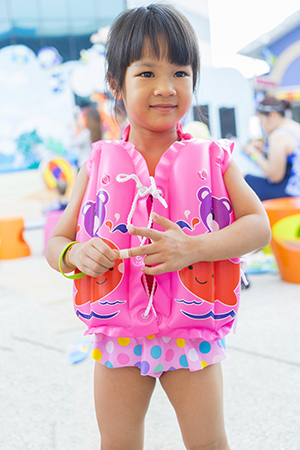With summer now underway, it is important to remember safety while on or along the water. The majority of us think “An accident will never happen to me!” or “I’m a good swimmer. I don’t need a life jacket.” Even though you may not think it can happen to you, accidents on the water happen more often than you think.
Wisconsin State Law states that all vessels including canoes, kayaks, and paddleboards must have at least one U.S. Coast Guard-approved wearable life jacket for each person on board, and those 13 years or under must wear a life jacket at all times while in a vessel. There are also some startling statistics pertaining to life jacket misuse. In 2015 where the cause of death in a boating accident was known, 76% of fatal boating accident victims drowned. Of those drowning victims with reported life jacket usage (had a life jacket with them), 85% were not wearing a life jacket (American Boating Association). Also, one half of all recreational boating fatalities happen in calm water (U.S. Coast Guard). These statistics are astounding! And while statistics can be scary, nothing is scarier than being in a life or death situation on the water, or seeing another person in danger because they didn’t take the necessary precautions.

This spring I received a brand new kayak for my birthday! I have wanted to get a kayak for the past few years and now I finally have one. I am not the greatest of swimmers which is why being safe on the water is so important to me! I have seen and heard about too many accidents on the water involving adults and children alike that I know the importance of wearing one. Then I got to thinking, “What is the right life jacket for me?” If you have ever researched life jackets you will see that there are many different types, styles, and colors. When choosing a life jacket, think about the activities you will be participating in while wearing it. Are you wearing it for activities like tubing or water skiing, offshore fishing like fly fishing, kayaking or rafting? Think of how you move while doing these activities and which life jacket would be the most comfortable to wear. An uncomfortable life jacket is less likely to be worn, and the only way a life jacket will work is to wear it! This guide can be a great resource when trying to choose a life jacket based on your water activity.
Different life jackets are available for adults, children, and even pets! Next we will talk about life jacket sizing. Life jacket sizing is based on your chest measurement and weight, and may vary based on the brand of your choice. A life jacket should not be too tight or too loose. Think of it like Goldilocks and the Three Bears: not too tight, not too loose, but juuuuust right! Make sure to have all zippers and/or buckles closed at all times so that jacket doesn’t slip off. Another way to test if the life jacket fits is to raise your arms and have another person pull up on the shoulders of the life jacket; if it covers your mouth or face then the life jacket is too big.

Another common misconception is that a throwable flotation device is a sufficient life jacket. This is definitely NOT a life jacket and should not be worn at any time. The US Coast Guard mandates that all vessels 16 feet or longer must have one of these devices on board for immediate accessibility in case of emergency.
Fun on the water and water safety go hand in hand. Now go out and find the life jacket the fits YOU!
Be Well,
Sarah.
Related Posts:
Spring Challenge
Distracted Driving Awareness Month
4 Ways to Be More Positive